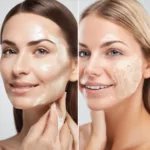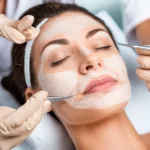5 January 2024
Discover the benefits and techniques of oilplaning, a new trend in dermaplaning that offers a gentler and more effective approach to achieving smooth and radiant skin.
Dermaplaning, the process of using a razor to remove dead skin cells and hair, has gained popularity on social media platforms. However, this seemingly simple technique can easily go wrong, leading to skin irritation and discomfort. To address these concerns, a new trend called oilplaning has emerged. By adding a small amount of oil to the skin during dermaplaning, individuals can create a protective barrier that minimizes tugging, irritation, and the risk of nicks and ingrown hairs. In this article, we will explore the benefits of oilplaning, the best oils to use, and provide step-by-step instructions for incorporating this technique into your skincare routine.
The Benefits of Oilplaning:
Oilplaning offers several advantages beyond traditional dermaplaning. Firstly, it can help reduce the appearance of wrinkles by exfoliating the outermost layer of dead skin cells and stimulating collagen production. This process can also hydrate the skin, smoothing out dehydration wrinkles. Additionally, oilplaning treatments can fade discoloration and acne scars, as the process removes excess hair, sebum, oil, and dirt, allowing the skin to regenerate collagen and even out old scars. Lastly, oilplaning ensures that active ingredients in skincare products penetrate deeply into the skin, maximizing their effectiveness and leaving the skin looking flawless.
Choosing the Right Oils for Oilplaning:
When selecting oils for oilplaning, it is important to choose ones that do not clog pores or leave a greasy residue on the skin. Mineral, baby, olive, and coconut oils, as well as oils with fragrance, should be avoided. Instead, opt for non-comedogenic oils such as squalene oils, which are nourishing and hydrating. Some recommended options include Biossance’s Squalane Oil and naturally derived botanical oils like The Outsets Ultra Light Moisture Boosting Oil and Biography’s Calm Face Oil.
How to Oilplane:
1. Prep your skin: Start with a clean face by double-cleansing. Apply a small amount of oil to your skin, ensuring not to overdo it. Clean your hands to maintain a secure grip on the razor.
2. Shave the skin in sections: Begin with your cheeks and jawline, holding the razor at a 45-degree angle and using downward strokes. Wipe off the razor blade as needed. Use shorter strokes on the lip, chin, neck, and forehead. Avoid oilplaning the nose and exercise caution around the eyes, lips, and brows.
3. Practice proper aftercare: Dispose of disposable razors or thoroughly clean reusable ones with an alcohol pad after each use. Consider chemically exfoliating after oilplaning to prevent breakouts. Avoid irritating actives or makeup for the next twelve hours. Finish with a post-treatment barrier cream.
Conclusion:
Oilplaning offers a gentler and more effective approach to dermaplaning, providing numerous benefits for the skin. By incorporating a small amount of oil into the process, individuals can minimize irritation, ingrown hairs, and achieve a brighter complexion. Remember to choose the right oils for oilplaning and follow proper techniques and aftercare to ensure the best results. With oilplaning, you can unlock the full potential of your skincare routine and enjoy smoother, more radiant skin.



